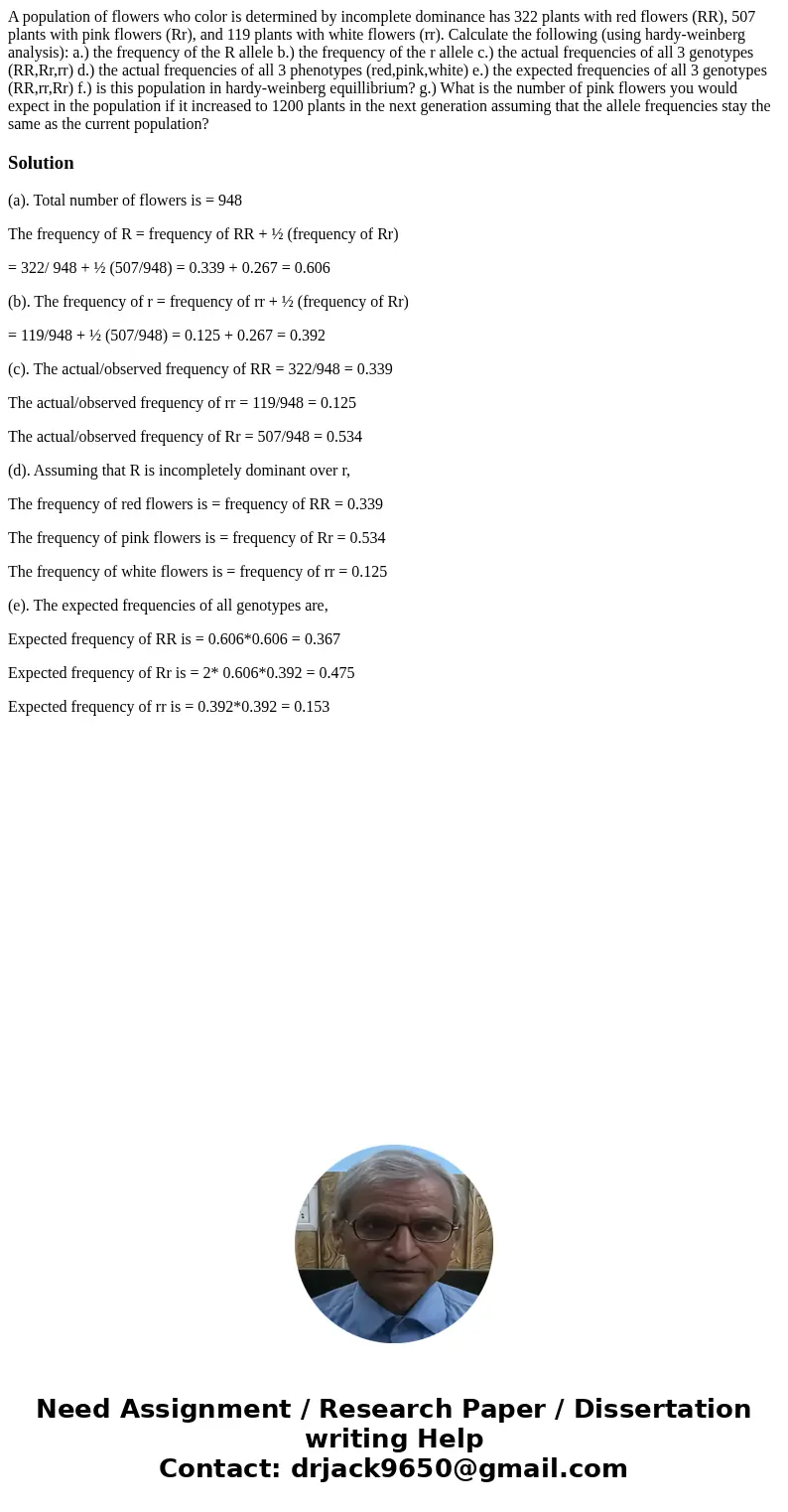A population of flowers who color is determined by incomplet
A population of flowers who color is determined by incomplete dominance has 322 plants with red flowers (RR), 507 plants with pink flowers (Rr), and 119 plants with white flowers (rr). Calculate the following (using hardy-weinberg analysis): a.) the frequency of the R allele b.) the frequency of the r allele c.) the actual frequencies of all 3 genotypes (RR,Rr,rr) d.) the actual frequencies of all 3 phenotypes (red,pink,white) e.) the expected frequencies of all 3 genotypes (RR,rr,Rr) f.) is this population in hardy-weinberg equillibrium? g.) What is the number of pink flowers you would expect in the population if it increased to 1200 plants in the next generation assuming that the allele frequencies stay the same as the current population?
Solution
(a). Total number of flowers is = 948
The frequency of R = frequency of RR + ½ (frequency of Rr)
= 322/ 948 + ½ (507/948) = 0.339 + 0.267 = 0.606
(b). The frequency of r = frequency of rr + ½ (frequency of Rr)
= 119/948 + ½ (507/948) = 0.125 + 0.267 = 0.392
(c). The actual/observed frequency of RR = 322/948 = 0.339
The actual/observed frequency of rr = 119/948 = 0.125
The actual/observed frequency of Rr = 507/948 = 0.534
(d). Assuming that R is incompletely dominant over r,
The frequency of red flowers is = frequency of RR = 0.339
The frequency of pink flowers is = frequency of Rr = 0.534
The frequency of white flowers is = frequency of rr = 0.125
(e). The expected frequencies of all genotypes are,
Expected frequency of RR is = 0.606*0.606 = 0.367
Expected frequency of Rr is = 2* 0.606*0.392 = 0.475
Expected frequency of rr is = 0.392*0.392 = 0.153

 Homework Sourse
Homework Sourse